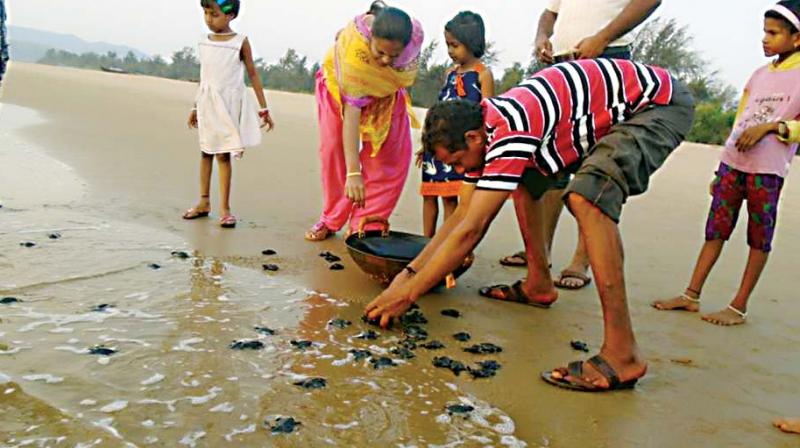Locals, fishermen join Save Olive Ridley campaign'
The eggs incubate for 53 days before they hatch and the baby turtles are released into the sea.

Karwar: They have worked for over three decades, tending to the eggs with loving care as the endangered Olive Ridley Turtles crawl ashore from the Arabian Sea to nest along the coast in Honnavara, Uttara Kannada district from January to March every year.
Trained by the forest department, fishermen and the locals have joined joined in the conservation of the critically endangered turtles since 1984 and are rewarded with Rs 600 each for their troubles.
Unlike in Odisha where there are mass nesting sites of these turtles, the coastline of Honnavara sees sporadic nesting and the local fishermen’s services are needed to protect their eggs and later young ones. “There are around eight sites where Olive Ridley Turtles lay eggs along the Honnavar coastline,” says Deputy Conservator of Forests, Vasanth Reddy.
The Olive Ridley Turtles come out of the water to lay eggs in batches of about 150 to 200 during the night before returning to the sea, according to him. And forest officials, accompanied by locals and fishermen, remove the eggs as early as 6 am and incubate them in their custody.
“If the eggs are not incubated in our custody, they become vulnerable to attack from predators such as stray dogs, crows and even some local people, who feast on them,” explains Mr Reddy. The eggs incubate for about 53 days before they hatch and the baby turtles are released into the sea with the help of locals and students. Since the conservation effort began as many as 85,000 eggs have been incubated from the nesting area, and 34,500 have hatched, the officer reveals with satisfaction.

